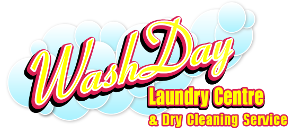The Secret is in the Sand (find out more)
Have you seen the difference Eco Spring dry cleaning makes? Did you know there was an alternative to the harsh solvents we’ve relied on for years.
Eco Spring is a gentle clean, safe for all your delicate fabrics.
Experience the ultimate in dry cleaning, with an eco-spin. Eco Spring…
- Eco-Friendly Alternative
- No Harmful Chemicals
- Completely Odour Free
- Safe for our water, soil and air
- Uses less water and energy
- Provides for sustainable fabric care
If you’re like most people, you probably think that dry cleaning is dry cleaning. That there’s really not much to separate one dry cleaners from the next except their location. And who could blame you? That’s pretty much been the case.
But now there’s Eco Spring Cleaning. And, for the first time, you and your wardrobe have a real choice.
Because Eco Spring is as different as different can be. Different in the way it’s made. Different in what it does for clothes. Different in how it protects the environment.
And we owe it all to sand.
No odor is just the beginning.
Because we do not use perchloroethylene (perc) we have no dry cleaning smell. But we’re not just gentle on your nose. We’re gentle on your clothes, too.
You can see for yourself. Whites don’t yellow. Colours won’t fade. And wools never get that “washed out” appearance. And shrinkage? That’s a thing of the past.
And that’s not just our opinion. It’s science.
The reason? Our liquid silicone is chemically inert. That means it doesn’t interact with fabric. It just carries the detergent to your clothes, and then carries away the dirt and oil.
We don’t use petroleum-based solvents like traditional dry cleaners
The Eco Spring process cleans with pure liquid silicone. In essence, liquefied sand. The same safe, natural sand the earth has been creating for six billion years.
In contrast, most dry cleaners use petroleum-based solvent called perchloroethylene, which can be very hard on fabric. Perc, as it’s called, is also classified as a Toxic Air Contaminant, and is carefully regulated by the Environmental Protection Agency, both in how it’s used and how it’s disposed of.


